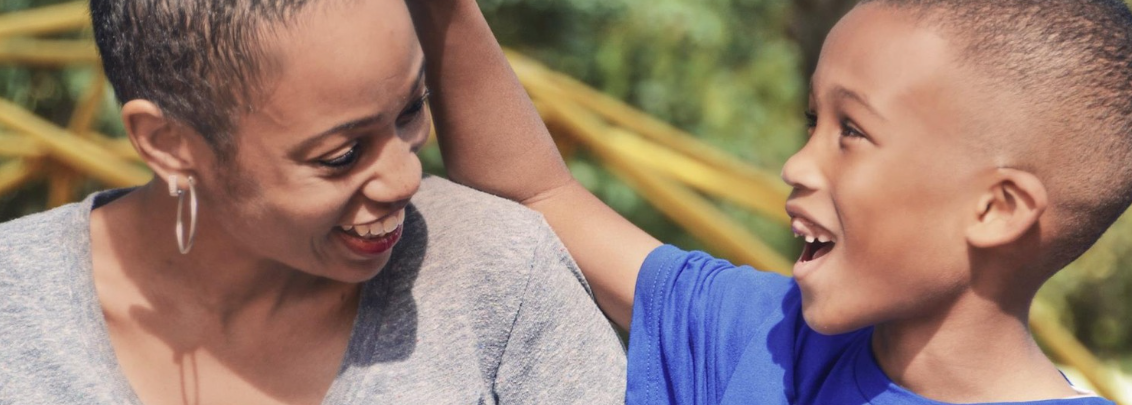Today’s donors have embraced a diverse variety of giving methods, and many nonprofits are racing to catch up. Non-cash gifts of assets like stock and grants from donor-advised funds stand out as key examples. They might be given as one-time donations, pledge payments, part of a bequest, or part of a more complex financial arrangement.
During a capital campaign, you owe it to your organization to understand and explore the giving options that donors might have in mind. Prepare to meet them where they are, and you’ll raise more.
Legacy giving is an excellent example. And though this form of giving is nothing new, it’s an increasingly important priority for organizations of all sizes.
You can incorporate legacy or planned giving into a capital campaign to support multiple goals at once. In many ways, they’re a natural match that can propel you well past your finish line.
But why? And how exactly can you add legacy giving to your campaign plan?
Why Legacy Giving Complements Capital Campaigns
Capital campaigns help nonprofits build capacity. During a campaign, organizations are often more open to investing in their long-term fundraising capabilities—meaning your campaign offers an ideal opportunity to build or bolster your planned giving program if it’s been on your to-do list.
So why prioritize legacy giving specifically? This form of giving brings several benefits when incorporated into a capital campaign:
- Flexibility. Legacy gifts are often unrestricted and can come in many forms (from simple bequests to complex trusts and annuities) that suit any donor’s wishes.
- Motivation alignment. Donors give to a capital campaign to make a serious future difference for their favorite cause. Legacy giving works similarly; these donors are motivated by legacy-building and long-term impact. For many donors, the added tax and estate planning benefits of legacy giving can also be especially appealing.
- Long timeframe. Legacy giving extends the tangible benefits of your capital campaign by creating a predictable revenue stream that lasts for decades.
However, adding another fundraising component to your capital campaign plans might feel easier said than done. A new strategic priority brings all kinds of additional logistical concerns, and board members might balk at added complexity. If the board is not fully supportive or doesn’t understand the strategic benefit of including legacy giving, it could create internal friction. Board engagement is key, and the board should be thoroughly educated and prepared before adding planned giving as a component.
If you’ve decided that your organization should explore this route, what next steps should you take?
Ways to Integrate Planned Giving into a Campaign
Thankfully, there’s no one single way to incorporate legacy gifts into your capital campaign. You can find the best route that meshes with your campaign’s goals and scope. This will ensure that the added initiative adds to rather than detracts from the overall fundraising momentum that you build over the course of the quiet phase and beyond.
There are two general routes you can take:
- Legacy giving as a separate but related push
- With this route, legacy gifts acquired during the campaign will not be counted toward the campaign’s overall fundraising goal. Instead, you’ll generally take the opportunity to devote some campaign budget to launching your program (with the right tools like Giving Docs) and promoting your planned giving options. Frame them as “impact boosts” to donors, additional commitments that cost them nothing today but will ensure your organization thrives well into the future. This approach is often ideal for smaller-scale capital campaigns.
- Legacy giving folded into the campaign goal
- Often ideal for larger-scale campaigns, this approach is more intentional and complex. Secured legacy gifts will be folded into your overarching goals for the campaign, usually with targets based on a total amount committed via legacy gifts and/or securing a specific number of individual commitments. Suppose your organization has concerns about potential cannibalization from asking for both campaign gifts and long-term legacy gifts. This strategy can reduce anxieties by ensuring that both giving options will contribute to success. However, balancing asks for immediate capital gifts and deferred planned gifts require delicacy. Clear donor communication is essential to prevent any confusion or reluctance. See below for a discussion of the logistics and policies you must consider for this approach.
A Note on Endowment Fundraising
Many nonprofits aspire to build robust endowment funds that will reduce their need for constant fundraising.
Capital campaigns can create ideal opportunities for seeding or growing an endowment, again because campaigns encourage donors to think about long-term impact and capacity. But tread carefully. If incorporated into a capital campaign’s goals without careful forethought, endowment fundraising can easily become a distraction that saps energy and donor interest. In other words, if the focus on long-term funds (endowment) overshadows current capital needs, it could divert donor interest or slow campaign momentum.
Legacy giving is an ideal method for raising endowment funds. If your campaign includes an endowment aspect, you’ll greatly benefit from having a planned program in place.
The overlapping goals (investing in your planned giving program, growing the endowment, securing more planned gifts) can all mesh neatly to simplify your campaign strategy and asks.
Endowment giving via bequest is a particularly helpful option for many mid-level donors. It allows donors who may not be able or willing to make large outright gifts to drive extra impact for your mission over the long run.
As your capital campaign’s plans come into focus, think carefully about whether endowment fundraising should be included as a goal. Then, use legacy giving to fuel it, likely using the structured goal-based approach listed above. By creating formal sources for both short-term dollars (direct campaign gifts) and future commitments (endowment bequests), large capital campaigns can generate sustainable, long-term funding.
How to Integrate Planned Giving into Your Campaign
What tactical steps should you take to incorporate legacy giving into your capital campaign? Let’s take a look:
- Determine how it will work.
First, consider the structure of your capital campaign and how planned giving will fit in. Consider the scale of your campaign, your priorities, and your team’s appetite for added complexity.
Will you ask donors for legacy gifts but not include them as a formal goal of the campaign? Will you set specific legacy giving goals as part of the campaign’s overall structure? If you’re also prioritizing endowment, how will legacy giving relate?
- Develop necessary gift and campaign policies.
Planned giving will require new or updated policies to run smoothly alongside or as part of your campaign.
However you incorporate planned giving into your campaign plans, you should revisit (or create) your gift acceptance and donor recognition policies. And if you’ll count bequests towards your campaign goal as a distinct priority or as part of endowment fundraising, you’ll need to expand your campaign counting policy. Here’s a sample policy from Capital Campaign Pro:
A bequest intention shall be credited toward the campaign, subject to the following conditions:
- The donor is 72 years of age or older.
- The bequest intention is stated in a specific amount.
- A copy of the relevant section of the will or codicil and signature page is provided.
- A pledge accompanies the bequest intention, essentially serving as a contract with the donor.
| Age of Donor | % of Face Value Counted |
| 71 and younger | 0% |
| 72-75 | 50% |
| 76-84 | 75% |
| 85+ | 100% |
Unrestricted planned gifts that mature (the donor dies or there is a trust distribution) during the campaign may, upon review and approval of the Board of Trustees, be allocated to support the campaign.
This policy clarifies when and what proportion of bequests will be counted toward the overarching campaign goal. It also includes a policy stating that unrestricted planned gifts disbursed to the organization during the campaign may be allocated to the campaign goal.
Note that the exact value of bequest intentions won’t be known until a later date. Use estimation strategies and tools, like Giving Docs’ Handraiser Calculator, to gain a clearer understanding of what you might expect to receive over the long run.
- Plan to include legacy giving in your solicitations.
Once fundraising is underway, discuss planned giving with prospects.
Depending on the structure of your campaign, you might frame planned giving in several ways: as an added “impact boost,” a formal priority for the campaign, and/or an ideal giving method for endowment gifts. In all cases, emphasize the incredible impact that legacy giving brings to your organization, and be prepared to speak to the tax benefits they offer, as well. (Just avoid giving explicit tax or financial advice—encourage donors to consult with professionals as needed.)
If bequests will contribute to an endowment fund, you should also think carefully about how you’ll talk about the endowment itself. Donors are attracted to specific mission-related impacts, and while many understand the immense value of a robust endowment, terms like “scholarship fund,” “innovation fund,” and “opportunity fund” will likely be more appealing than a plain “endowment.”
- Expand your prospect pool for legacy gifts.
Capital campaign funding strategies and gift range charts hone in on very small groups of lead donors. These individuals will likely make viable legacy giving prospects, and you should bring it up with all top prospects, but don’t limit yourself.
Legacy giving is highly accessible since it costs nothing now and comes from total wealth rather than only cash or other liquid assets. As mentioned above, passionate mid-level donors often make excellent prospects for planned giving for these reasons.
- Study up to have more productive conversations.
If your organization has never before pursued planned gifts, you’ll likely need to educate and equip your team. Consider these best practices:
- Educate all fundraisers on your policies. Everyone who interacts with donors and prospects should understand how legacy gifts fit into the campaign and the details of your legacy gift acceptance policy.
- Create educational and promotional materials about planned giving. One-pagers or campaign brochures that define key legacy giving terms, outline the positive impacts, and highlight key benefits for donors will provide fundraisers with the support they need to approach conversations confidently.
- Create your planned giving program’s infrastructure, namely a legacy society of some sort. A structured way to offer recognition and perks to your legacy donors will make a positive impression and convey how much you appreciate and value these gifts.
- Develop intention forms for securing legacy commitments. A basic document securing the intention helps ensure follow-through and simplifies record-keeping.
Again, do not give donors explicit tax, financial, or estate planning advice. Fundraisers and volunteers can generally discuss the benefits of planned gifts but should always refer donors to professionals to learn more about their specific situations and legacy giving implications.
Legacy giving presents major benefits for nonprofits of all sizes, and by seizing the opportunity to incorporate it into your capital campaign, you’ll set your mission up for long-term success.
The points and details in this guide should give you a clearer idea of why legacy giving suits campaigns and your options for formulating a plan. Keep considering the specifics of your unique campaign, goals, and donor base to find the ideal route for your organization.




